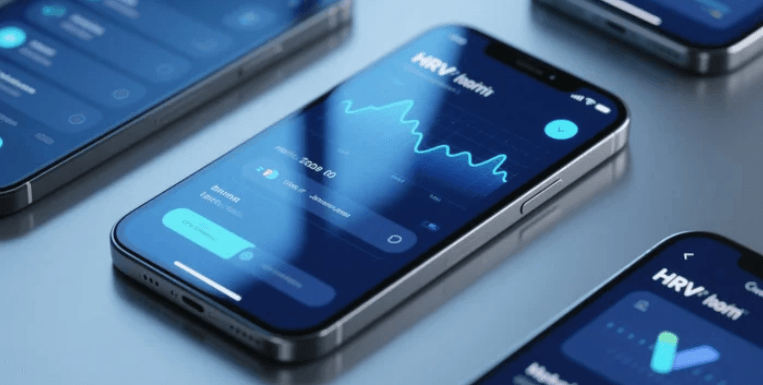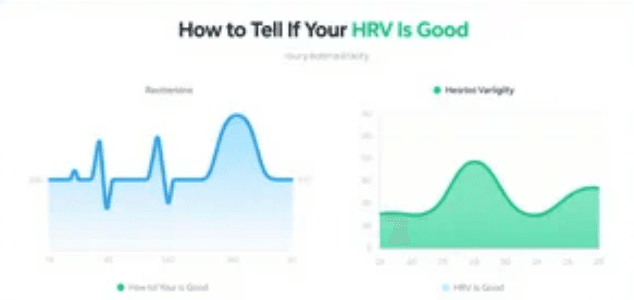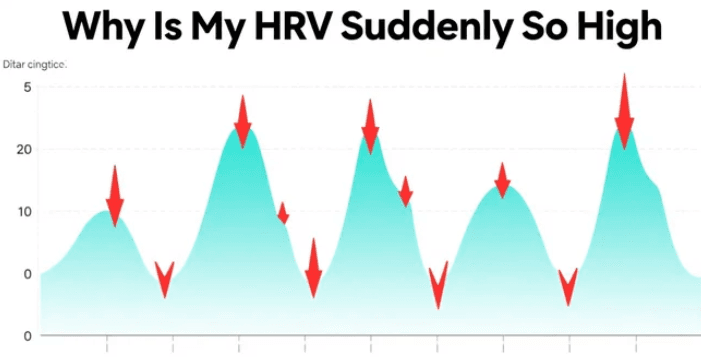How to Tell If Your HRV Is Good? The Ultimate Guide to Heart Rate Variability
Heart Rate Variability (HRV) has emerged as one of the most insightful biomarkers for overall health, fitness, and stress resilience. Unlike your resting heart rate, which simply counts beats per minute, HRV measures the subtle variations in time between each heartbeat - a window into your autonomic nervous system function.
But with all the data available, how can you actually tell if your HRV is good? What numbers should you be looking for? And how do factors like age, fitness level, and lifestyle affect your readings? This comprehensive guide will walk you through everything you need to know about interpreting your HRV, with actionable tips for tracking and improving it using reliable tools like BodyWave app.
Understanding HRV: The Basics
Before determining whether your HRV is good, it's essential to understand what HRV actually represents:
-
Physiological Basis: HRV reflects the interplay between your sympathetic (fight-or-flight) and parasympathetic (rest-and-digest) nervous systems
-
Measurement: Typically recorded in milliseconds (ms), representing the time variation between consecutive heartbeats
-
Key Insight: Higher HRV generally indicates better adaptability and recovery capacity
A common misconception is that a "good" HRV means having the highest possible number. In reality, HRV is highly individual, and what matters most is your personal baseline and trends over time.
What Constitutes a Good HRV?
While HRV ranges vary significantly between individuals, here are general guidelines for RMSSD (a common HRV metric):
HRV Score Interpretation
-
Excellent: Above 60ms (typically seen in well-trained athletes)
-
Good: 40-60ms (healthy adults with good recovery)
-
Average: 20-40ms (common in moderately stressed individuals)
-
Low: Below 20ms (may indicate poor recovery or chronic stress)
Important Note: These ranges are approximate. A 30ms reading might be normal for one person but concerning for another who typically scores 50ms.
Key Factors That Influence HRV
Understanding these variables will help you better interpret your numbers:
1. Age-Related Changes
HRV naturally declines with age. A 60-year-old will typically have lower HRV than a 20-year-old, even if both are equally healthy.
2. Fitness Level
Endurance athletes often have significantly higher HRV than sedentary individuals due to enhanced parasympathetic tone.
3. Circadian Rhythm
Your HRV follows a daily pattern, typically peaking during sleep and reaching its lowest point in the afternoon.
4. Lifestyle Factors
-
Sleep quality (poor sleep = lower HRV)
-
Hydration status (dehydration reduces HRV)
-
Alcohol consumption (can depress HRV for 24-72 hours)
-
Stress levels (chronic stress lowers HRV)
For accurate tracking that accounts for these variables, BodyWave app provides personalized insights by correlating your HRV with lifestyle factors.
How to Measure Your HRV Accurately
To properly assess whether your HRV is good, you need reliable measurement methods:
Best Measurement Practices
-
Consistent Timing: Measure first thing in the morning, before getting out of bed
-
Proper Position: Remain still and breathe normally during readings
-
Duration: At least 2-5 minutes for accurate assessment
-
Device Selection:
-
Gold Standard: ECG chest strap (Polar H10)
-
Convenient Alternative: Optical sensors (Apple Watch, BodyWave app)
-
Tracking Over Time
Single measurements have limited value. The true power of HRV comes from observing trends over weeks and months. BodyWave app excels at visualizing these trends while accounting for daily fluctuations.
Interpreting Your HRV Data
Here's how to analyze your readings:
1. Establish Your Baseline
Record your HRV for 2-4 weeks under normal conditions to determine your personal range.
2. Watch for Significant Changes
A 10-20% deviation from your baseline is more meaningful than absolute numbers.
3. Contextualize with Other Data
Correlate HRV with:
-
Sleep duration/quality
-
Training load
-
Stress levels
-
Illness symptoms
BodyWave app simplifies this analysis by integrating multiple health metrics in one dashboard.
Practical Tips to Improve Your HRV
If your HRV isn't where you'd like it to be, try these evidence-based strategies:
1. Optimize Sleep Hygiene
-
Maintain consistent sleep/wake times
-
Create a dark, cool sleeping environment
-
Limit screen time before bed
2. Manage Stress Effectively
-
Practice daily mindfulness or meditation
-
Engage in relaxing activities
-
Consider adaptogens like ashwagandha
3. Train Smart
-
Incorporate proper recovery between intense sessions
-
Include variety in your workouts
-
Avoid chronic overtraining
4. Support Recovery
-
Stay hydrated
-
Consume anti-inflammatory foods
-
Consider magnesium supplementation
Tracking these interventions with BodyWave app helps identify what works best for your physiology.
When to Be Concerned About Your HRV
While HRV is a valuable metric, remember:
Normal Fluctuations
Day-to-day variations of 10-30% are completely normal and expected.
Red Flags
Consult a healthcare provider if you notice:
-
Sustained, unexplained drops >30% from baseline
-
HRV consistently below 20ms with fatigue symptoms
-
Dramatic changes accompanying other health issues
Best Tools for HRV Tracking
For reliable monitoring, consider:
1. Medical-Grade Devices
-
ECG chest straps (most accurate)
-
Clinical HRV analysis tools
2. Wearable Technology
-
Apple Watch (good for trends)
-
Garmin devices
-
Whoop strap
3. Specialized Apps
For those seeking comprehensive HRV insights without expensive hardware, BodyWave app offers advanced analysis with simple smartphone compatibility.
Conclusion: Making Sense of Your HRV
Determining whether your HRV is good requires understanding your personal baseline, recognizing normal fluctuations, and tracking trends over time. While general ranges exist, your optimal HRV is unique to your physiology and lifestyle.
By using precise tracking tools like BodyWave app and implementing science-backed recovery strategies, you can optimize your HRV for better health, performance, and resilience. Remember that HRV is just one piece of the wellness puzzle - interpret it in context with other health markers and how you actually feel.
Start monitoring your HRV consistently today, and you'll gain valuable insights into your body's inner workings, empowering you to make smarter decisions about training, recovery, and overall wellbeing.







BodyWave: Invest in Your Well-being!

